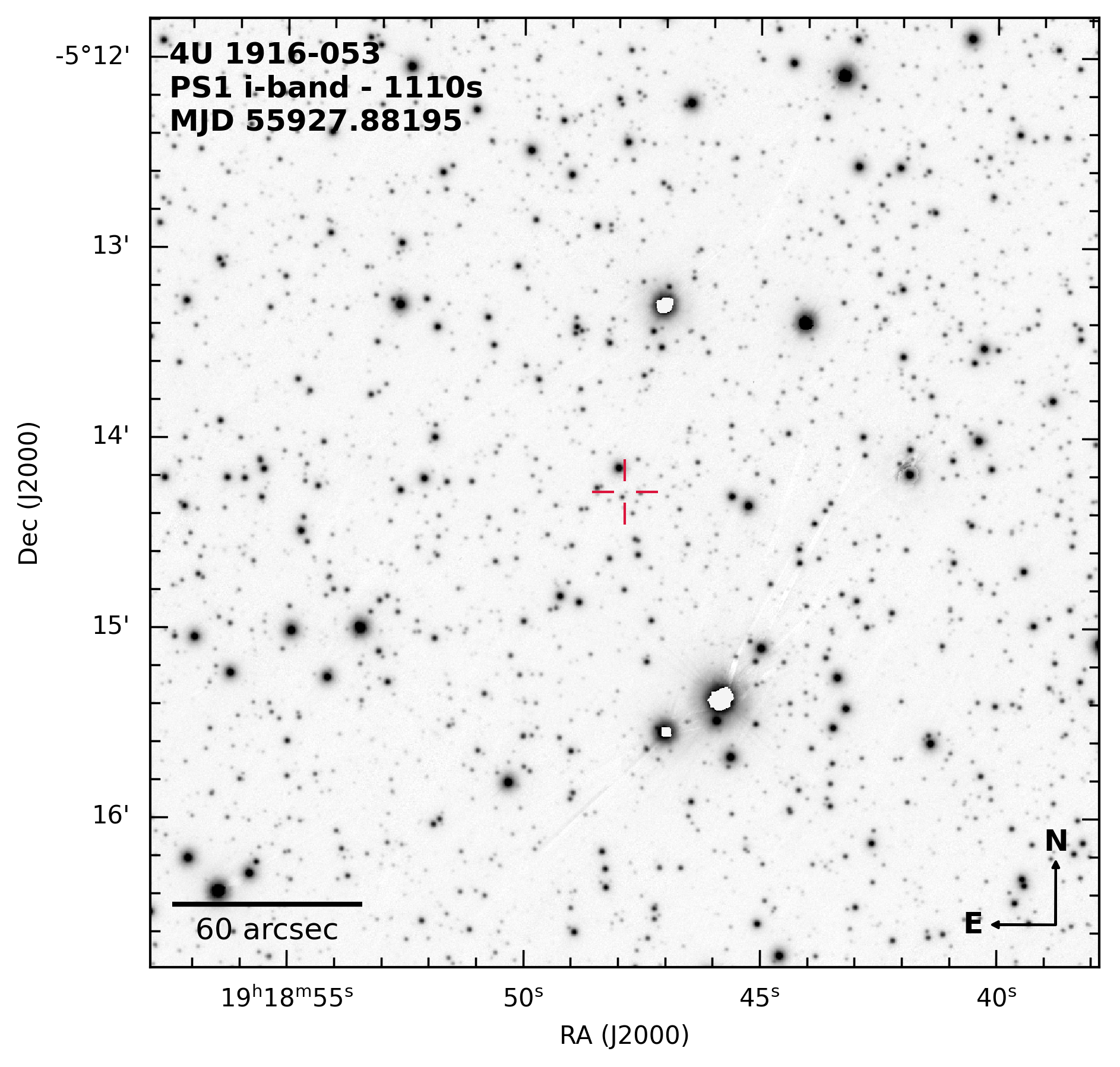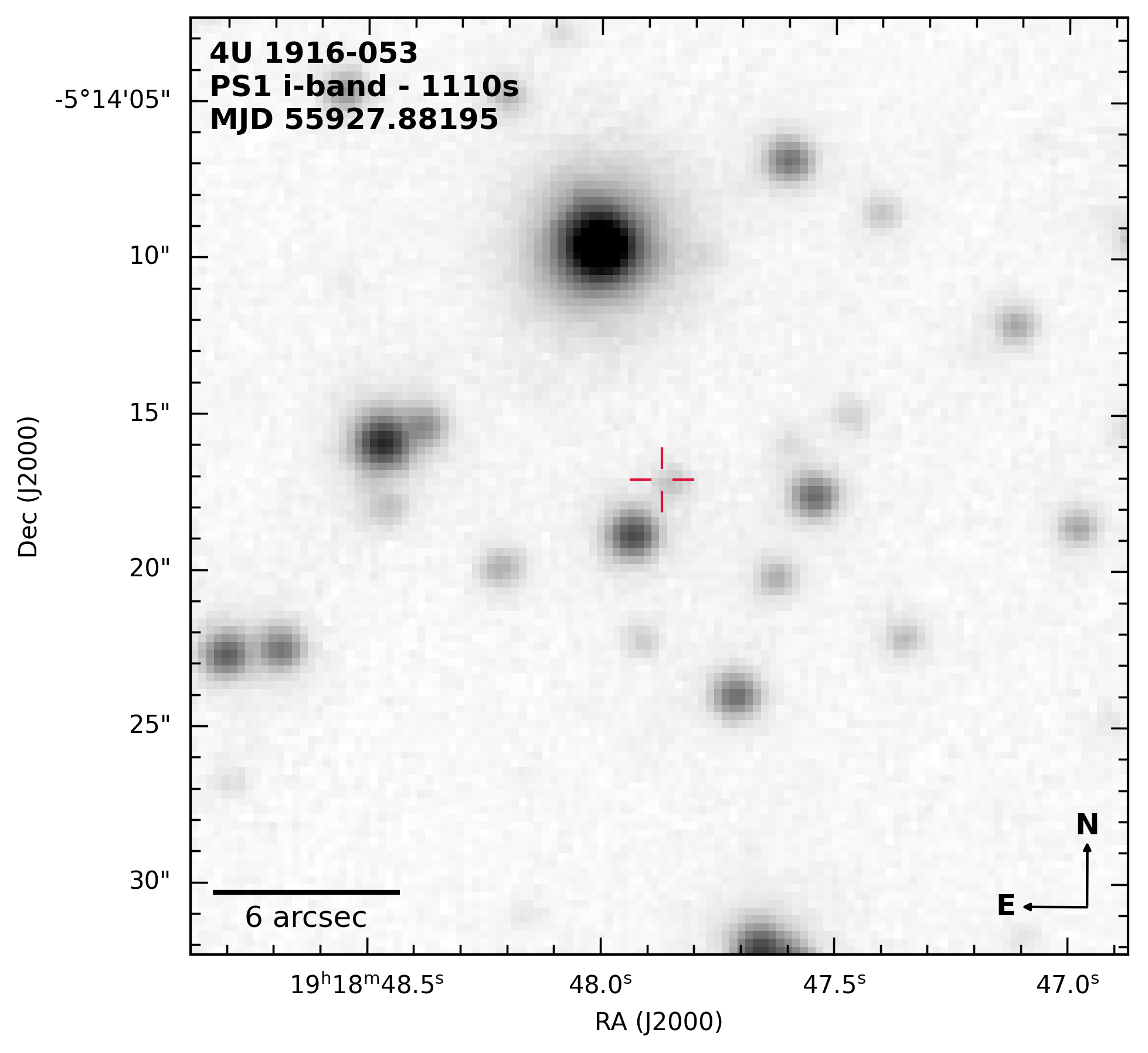« Previous object
Next object »
ID# 15
4U 1916-053
XB 1916-05, XB 1916-053, 4U 1915-05, V1405 Aql
RA Dec
|
ℓ b
|
Year of discovery: 1972
(Giacconi1972)
| Location in Globular Cluster | ||
|---|---|---|
| Type of accretor | NS | Persistent |
|
Distance [kpc] (other distances) |
5.8±0.3(H), 7.6±0.4(He)
|
Galloway2020 Smale1988Chelovekov2017 |
| z [kpc] | -1.12 | Galloway2020 |
| Orbital period (Porb) [min] | 49.75±0.16 | Walter1982White1982a |
| Porb determination method | X-ray dips | |
| Thermonuclear X-ray burst | short-B | Becker1977 |
| Peak X-ray flux [erg s-1 cm-2] (2 - 10 keV) |
5.57E-10 | Iaria2006 |
| NH [x1022 cm-2] | 0.55±0.04 | Iaria2021 |
| E(B-V) [mag] | ||
| Magnitude | V=20.99±0.05 | Grindlay1987 |
| Proposed companion | He-rich donor (Optical spectrum) |
Nelemans2006 |
| Using a baseline of 40 years, Iaria2021 derived an orbital period derivative of ~1.4E-11 s/s. Moreover, they detected a periodic modulation in the orbital ephemeris that they explained as the presence of a third body orbiting around the binary system. The source shows a positive (~3028 s; Grindlay1988) and a negative (~2979 s; Retter2002) superhump, which suggest the presence of a precessing elliptic accretion disk tilted with respect to the equatorial plane of the system. A burst oscillation at ~270 Hz was discovered in a single burst observed by RXTE in August 1998 (Galloway2001). |
| UV | ||
|---|---|---|
| Optical | He I, He II, N II and N III lines | Nelemans2006 |
| X-ray | Fe XXV Kα (~6.65keV), FeXXVI Kα (~6.95keV) absorption lines Ne X Kα (~1.02 keV), Mg XII Kα (~1.47 keV), Si XIV Kα (~2 keV), S XVI Kα (~2.61 keV) absorption lines O VIII K (~0.87 keV) absorption edge; Fe XXV Kβ (~7.79 keV), Fe XXVI Kβ (~8.19 keV) absoprtion lines Si XIV Kα (~2.37 keV), Ca XX Kα (~4.10 keV) absorption lines |
Boirin2004 Iaria2006 Gambino2019 Iaria2021 |
|
|||
|---|---|---|---|
| V=20.99±0.05, B=21.4±0.05, U=20.88±0.05 | |||
Aladin finding chart
Scroll to zoom. Set survey image in "Manage layers"
Default image: DSS2 Red
4U 1916-053 in Simbad
Pan-STARRS1 finding chart
Click to enlarge in new tab/window


References to finding charts
This research has made use of NASA's Astrophysics Data System (ADS) and the SIMBAD database operated at CDS (Strasbourg, France)
Please acknowledge the use of this catalogue in any published work you derive from it.
Last modified: 09 May 2023.

